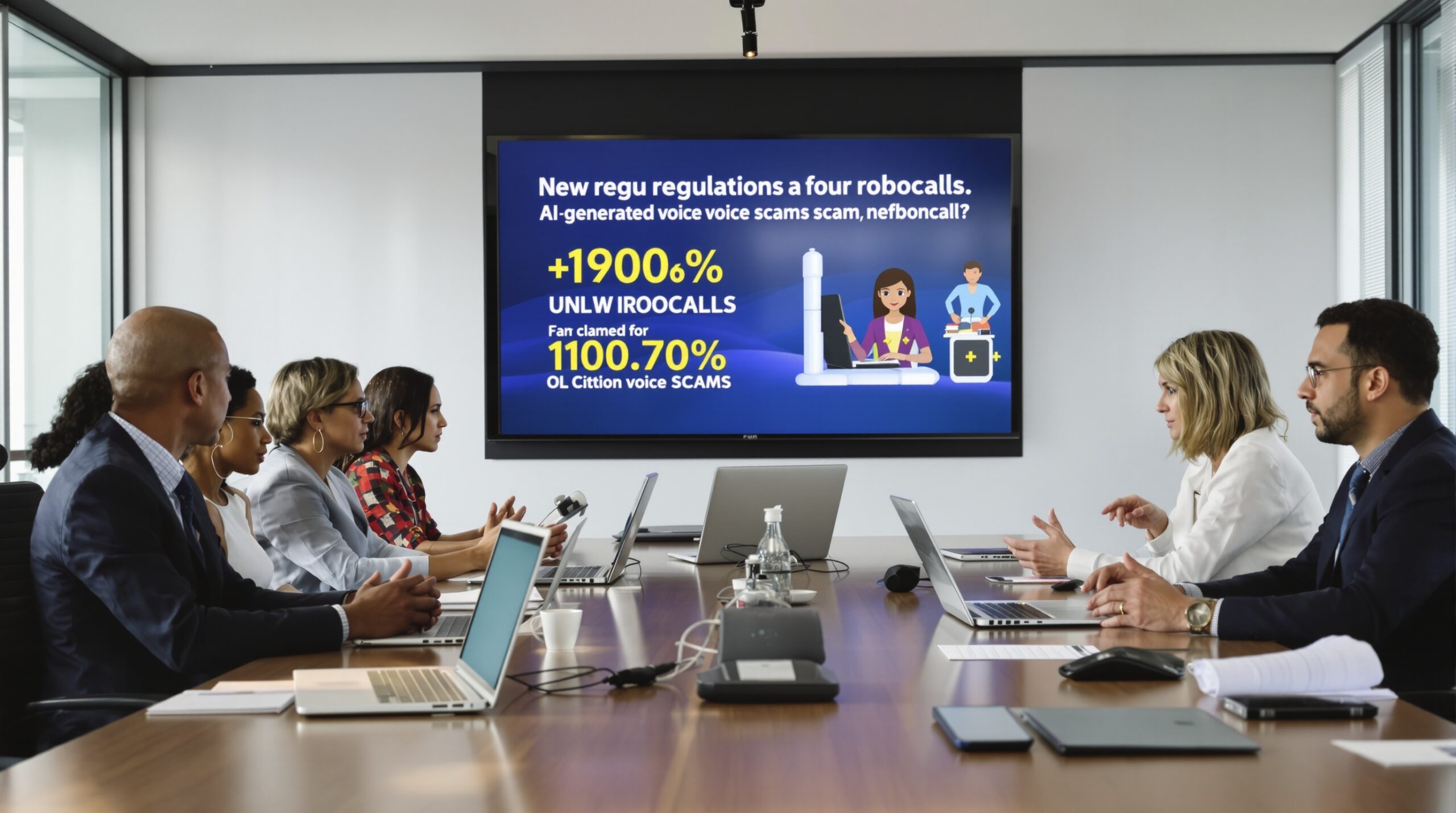Artificial intelligence has revolutionized communication worldwide. However, its misuse is rapidly creating new risks for consumers and businesses. AI-generated voice scams, also known as “deepfake robocalls,” have emerged as a significant threat. To address these threats, regulatory agencies introduced new rules for robocalls.
Understanding AI-Generated Voice Scams
AI-generated voice scams use advanced language models to simulate real voices convincingly. Scammers often impersonate trusted individuals, including public officials, company executives, or loved ones. These scams target people using familiar speech patterns, accents, and emotional cues to deceive victims and steal sensitive information.
Such technology can record voices from public postings, social media, or customer service calls. Scammers then use these samples to create deepfake audio content. The technology’s rapid development has outpaced current security protocols, allowing criminals to breach unsuspecting victims’ trust more easily.
Rising Trends in Deepfake Robocalls
Reports of AI-generated robocalls have surged across the United States and globally. In recent cases, criminals imitated politicians’ voices during elections to spread misinformation. Others impersonated business executives in schemes called “CEO fraud,” convincing employees or partners to transfer money or confidential data.
Unlike traditional robocalls, which often feature unnatural or pre-recorded messages, AI robocalls are interactive. They can adjust responses based on the victim’s answers, making detection and prevention much harder. This sophistication has alarmed authorities and prompted swift regulatory action.
Public Impact of AI Voice Robocalls
Deepfake robocalls undermine public trust and cause financial, reputational, and emotional harm. A common scenario involves scammers imitating a family member’s voice, claiming an emergency, and demanding urgent payment. Victims often act before verifying the caller’s identity, resulting in significant losses.
Meanwhile, businesses face increasing vulnerability to social engineering attacks. A convincing voice message from a supposed executive can lead to fraudulent wire transfers or data breaches. Elections are also at risk, with robocalls spreading false information using AI-generated voices of political figures.
Government Response and New FCC Rules
The United States Federal Communications Commission (FCC) responded to the threat by updating regulations for robocalls. In February 2024, the FCC issued an explicit ban on using artificial intelligence-generated voices in unsolicited robocalls without consumers’ prior consent.
This change expands on existing rules under the Telephone Consumer Protection Act (TCPA). The law already restricts most automated calls without recipient’s permission. Now, the clarified rules specifically mention AI-cloned or deepfake voices, closing loopholes exploited by deceptive scammers.
Enforcement is a top priority for the FCC and partnering agencies. Penalties for illegal AI robocalls include steep fines, cease-and-desist orders, and lawsuits. The FCC works with telecom carriers to trace, identify, and block calls from suspicious or unregistered sources.
Why Stricter Laws Became Necessary
Emerging AI technologies created legal gray areas for robocall enforcement. Traditional rules did not anticipate deepfake generators that mimic human voices nearly perfectly. Scammers abused these advances, making it challenging for victims to distinguish legitimate calls from fraud.
Lawmakers and regulators realized they needed targeted rules for AI voice technology. Public pressure followed high-profile scams, including election-related incidents and large-scale financial frauds. The updated FCC regulations help law enforcement stay ahead of new scam tactics and ensure public safety.
State-Level Changes and Collaboration
Several states introduced or expanded robocall laws as well. New York enacted tough penalties for AI-generated scam calls. Other states, such as California and Texas, amended existing statutes to include deepfake robocall language. Coordination between federal and state regulators increases the effectiveness of enforcement actions.
Technical Solutions for Robocall Prevention
While regulations are essential, technology also helps to prevent AI robot scams. Carriers implement call authentication protocols, like STIR/SHAKEN, which verify caller identity to reduce spoofing. Specialized software can also detect patterns characteristic of AI-generated voices or suspicious dialogue structures.
Artificial intelligence aids in defense as well as offense. Tech companies develop neural networks to flag deepfake audio samples. Financial institutions use voice biometrics to verify customers, preventing unauthorized transactions triggered by voice-only commands. Combined, these technologies make AI scam detection more effective over time.
How Consumers Can Protect Themselves
Education about AI-generated voice scams is crucial for public safety. Consumers should be cautious about unexpected calls or urgent requests, especially about financial matters. It is wise to verify a caller’s identity through a known number or secondary method before sending money or sensitive data.
People can use call-blocking apps, carrier services, and official government lists to reduce robocalls. Reporting suspicious calls to the FCC or local enforcement helps authorities track and respond to active scams. Spreading awareness ensures more people remain vigilant in the digital age.
The Ongoing Battle Against AI Voice Fraud
Regulatory agencies and technology providers continue working together against AI-driven robocall threats. Criminals will likely adapt tactics as defenses improve. Thus, rules and detection methods must evolve to keep pace with technological advances and emerging scam trends.
International collaboration also plays an important role. Voice scams do not respect borders, and global enforcement helps reduce cross-border fraud attempts. Multinational efforts ensure investigators can pursue scammers regardless of location and apply consistent ethical standards.
The Future of Robocall Regulation and AI
As artificial intelligence continues to develop, policymakers anticipate new challenges to consumer protection. Public debate will likely shape future robocall rules, balancing innovation with privacy and safety. Ongoing research and dialogue help keep regulations up to date.
The combination of law, technology, and education offers the best defense. Standardizing rules across states and countries remains a priority. Over time, awareness campaigns and strong enforcement will likely reduce the damage caused by AI-generated robocall scams.
Conclusion
AI-generated voice scams represent a growing threat to individuals and organizations. Governments responded with new, stricter rules on robocalls. Continued cooperation between regulators, technology companies, and consumers will help safeguard communication channels against future fraud attempts.

